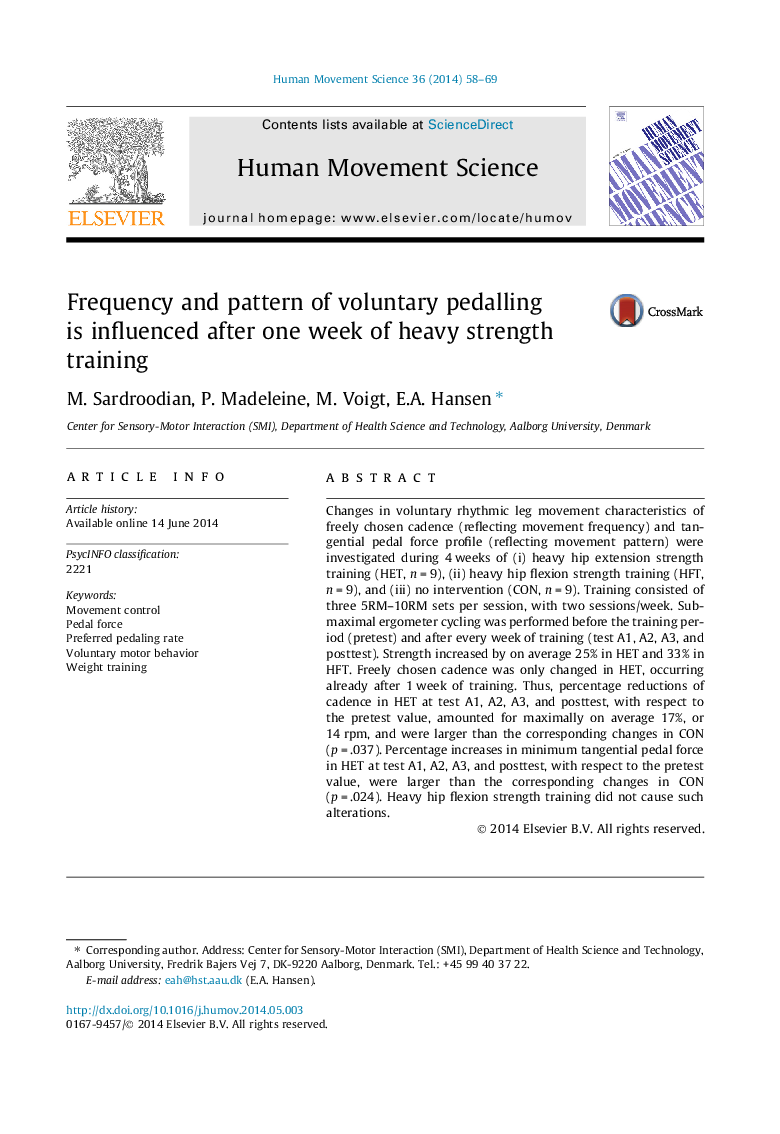| Article ID | Journal | Published Year | Pages | File Type |
|---|---|---|---|---|
| 928323 | Human Movement Science | 2014 | 12 Pages |
•Voluntary pedalling was studied in recreationally active individuals.•Frequency (cadence) and pattern (tangential pedal force profile) was determined.•Individuals performed 4 weeks of heavy hip extension or flexion strength training.•Extension training reduced the cadence up to 17% and changed the tangential force.•This alteration began already after 1 week of training.
Changes in voluntary rhythmic leg movement characteristics of freely chosen cadence (reflecting movement frequency) and tangential pedal force profile (reflecting movement pattern) were investigated during 4 weeks of (i) heavy hip extension strength training (HET, n = 9), (ii) heavy hip flexion strength training (HFT, n = 9), and (iii) no intervention (CON, n = 9). Training consisted of three 5RM–10RM sets per session, with two sessions/week. Submaximal ergometer cycling was performed before the training period (pretest) and after every week of training (test A1, A2, A3, and posttest). Strength increased by on average 25% in HET and 33% in HFT. Freely chosen cadence was only changed in HET, occurring already after 1 week of training. Thus, percentage reductions of cadence in HET at test A1, A2, A3, and posttest, with respect to the pretest value, amounted for maximally on average 17%, or 14 rpm, and were larger than the corresponding changes in CON (p = .037). Percentage increases in minimum tangential pedal force in HET at test A1, A2, A3, and posttest, with respect to the pretest value, were larger than the corresponding changes in CON (p = .024). Heavy hip flexion strength training did not cause such alterations.
